After several days' exploring, I believed that Bologna was the city had the most porticoes in the world - in total, there are over 45 kilometers of arcades, some 38 in the city center; and perhaps in the past, the most towers as well (estimated at about 180), though there were only a couple dozens remained, with with two most prominent ones emerging the symbol of Bologna. Below is a model of the ancient Bologna with its hundreds towers on display in the city's Palazzo D'Accursio (Palazzo Comunale):
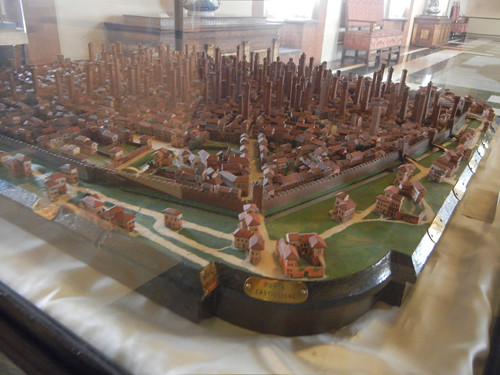
Model of ancient Bologna
The most famous two towers, both of them leaning, were collective called Le due torri (The Two Towers, consisting of Torre Garisenda, and Torre Asinelli) and were located at the intersection of the roads that lead to the five gates of the old ring wall (mura dei torresotti). The taller one is called the Asinelli while the smaller but more leaning tower is called the Garisenda.
The first tower we saw in Bologna, a bit off the city's central square Piazza Maggiore was a tower I still couldn't confidently identify, when we chance entered in a small courtyard.
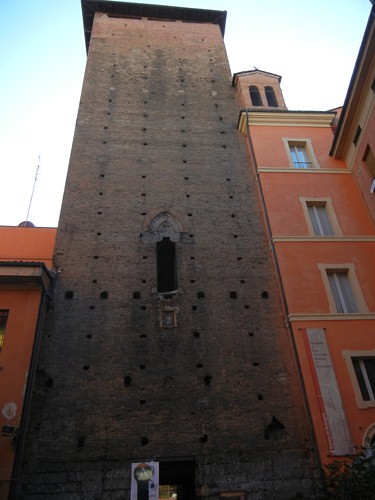
As we went on to the opposite direction, towards the Universities and Pinacoteca, the unmistakable Le due torri (Torre Garisenda, and Torre Asinelli) lay right ahead of us. Climbing upon the taller tower supposed to be great fun but can be physically demanding and dangerous due to some open sections so we decided not to do so, rather, we just admired it from different angles and distances. Below are a few shots from various angles during day and night:
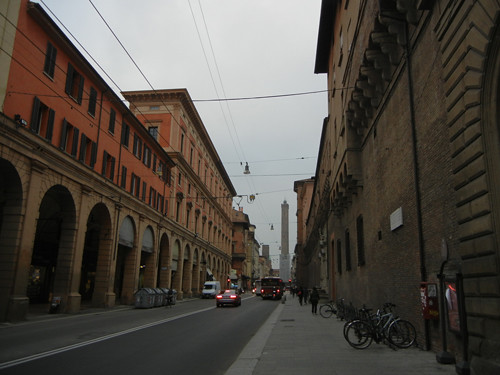
Torre degli Asinelli and Palazzo D'Accursio (Palazzo Comunale)
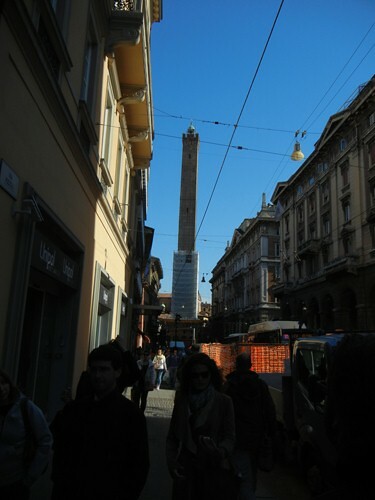
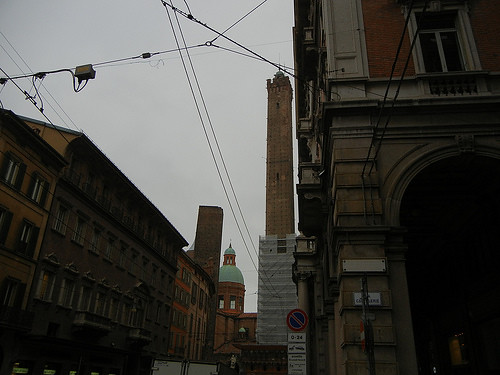
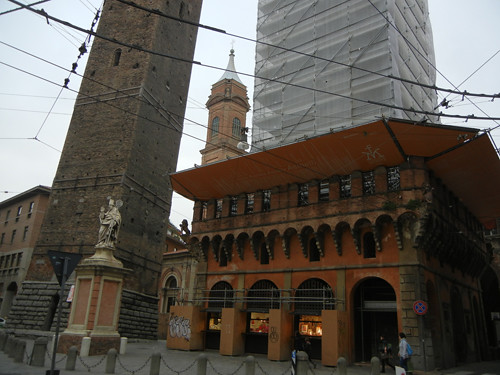
Torre degli Asinelli
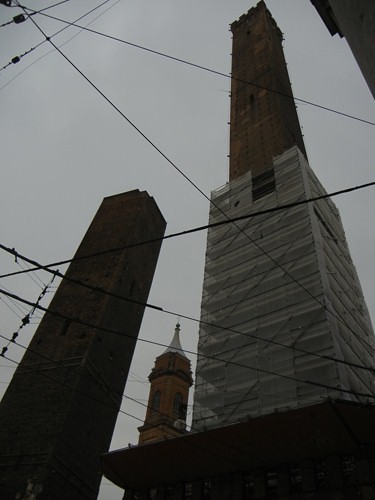
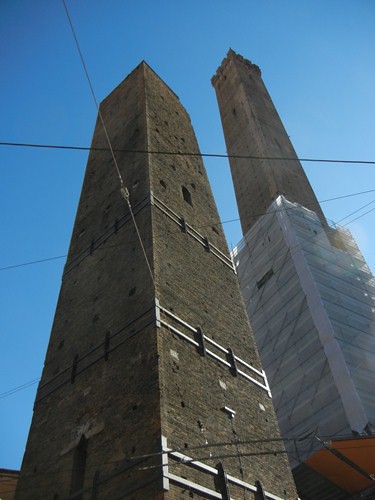
Le due torri (Torre Garisenda, left and Torre degli Asinelli, right)
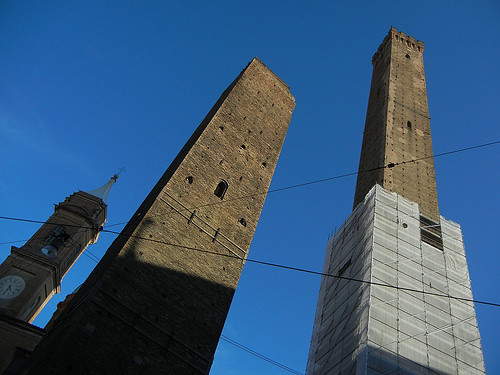
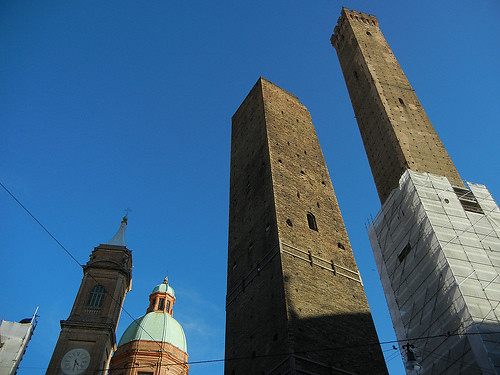
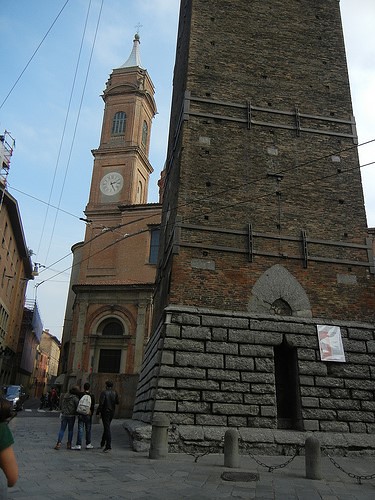
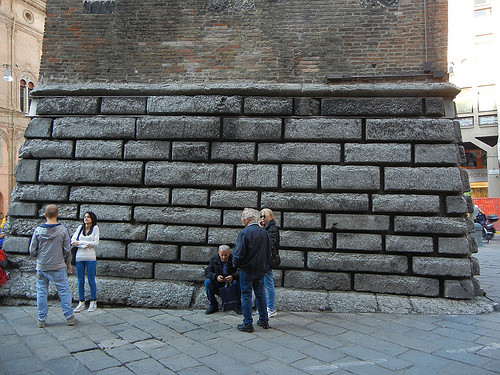
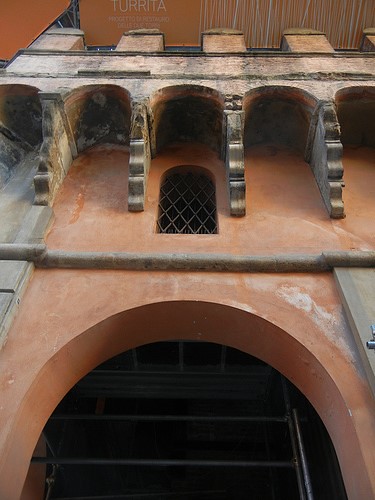

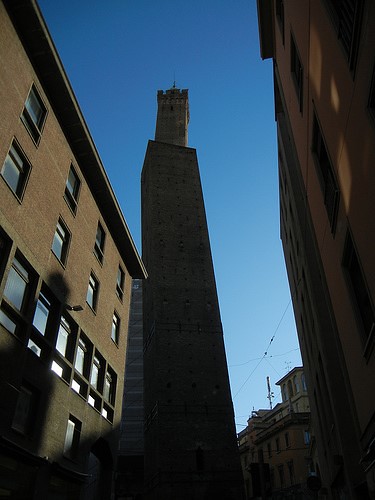
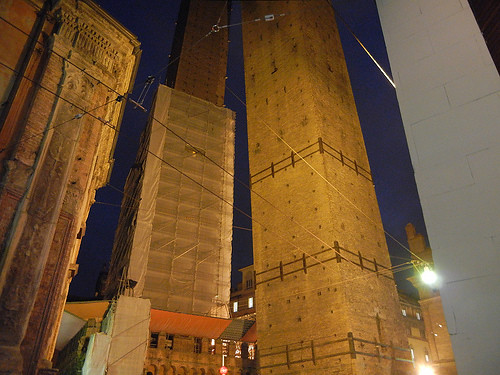

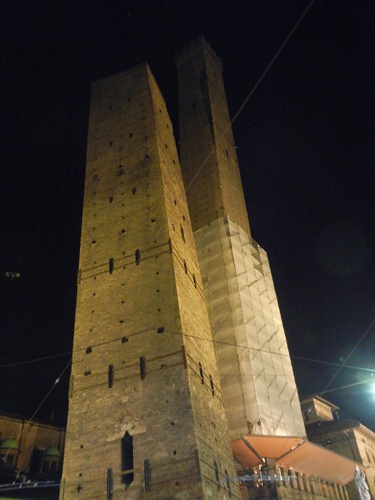
Tower and arcades were quite ubiquitous in Bologna. Below was a picture of Bologna's lovely Piazza Santo Stefano, where both the arcades and a tower could be seen within a single frame:
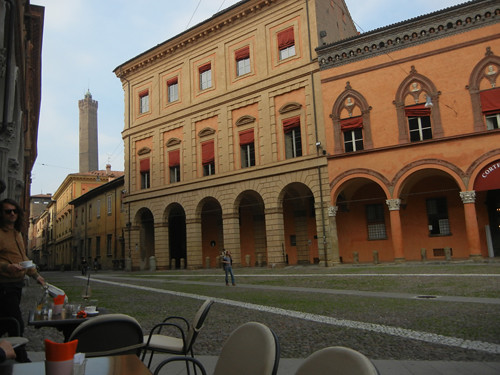
Piazza Santo Stefano
Around the amphitheater looking Piazza Santo Stefano, there were many buildings with lovely porticoes of many styles:
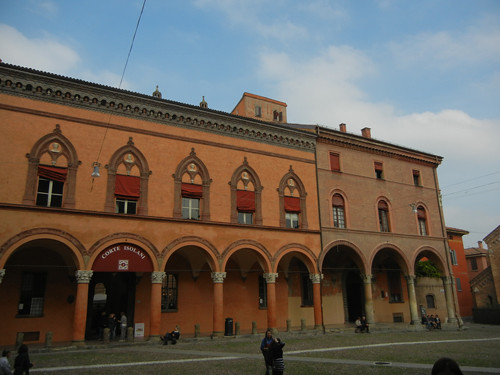
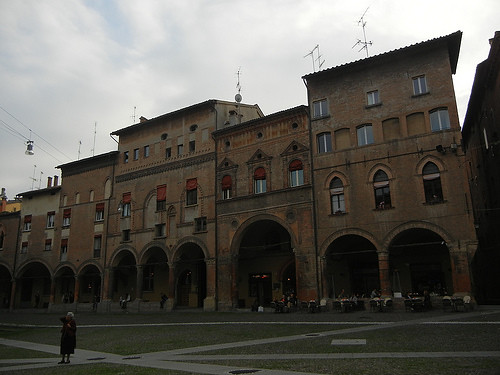
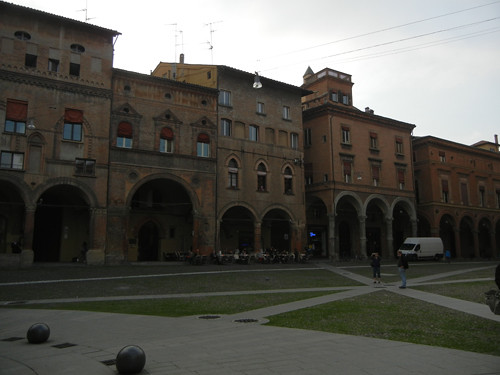
Piazza Santo Stefano
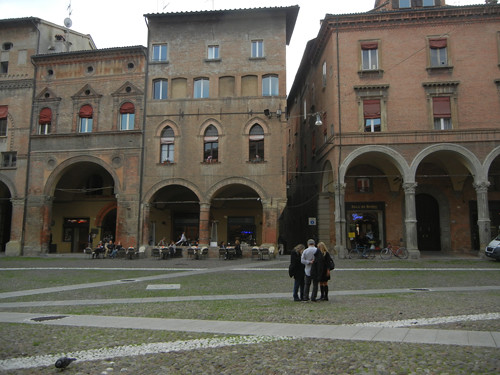
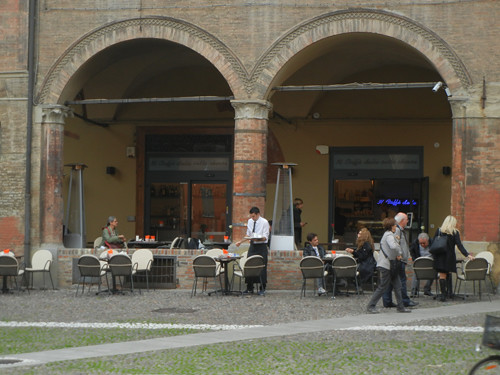
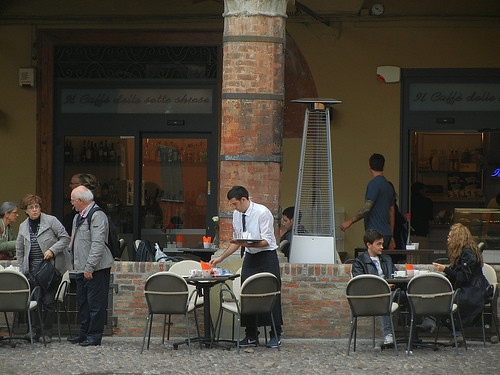
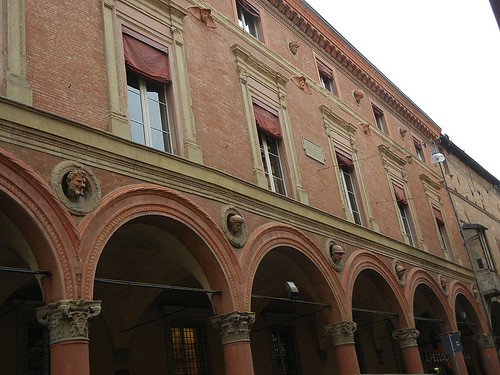
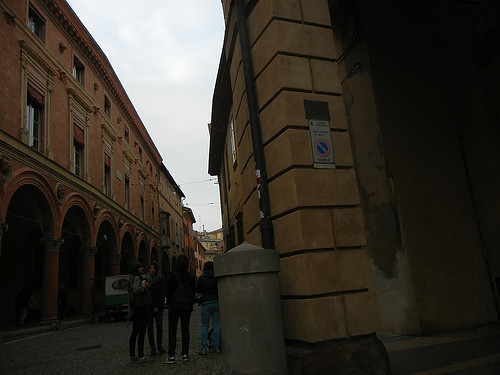
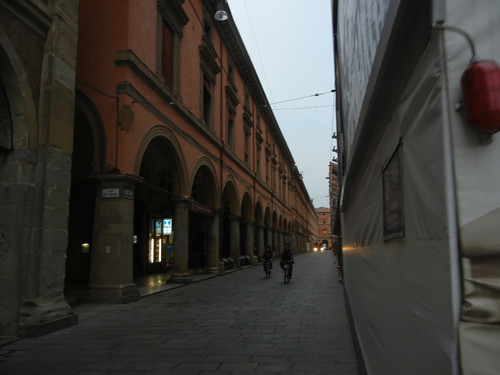
Another area I felt that I was overwhelmed by many arcades was around the university, with some especially noteworthy ones as those with frescoes inside the loggia and the multiple-leveled arcades inside the law school courtyard:
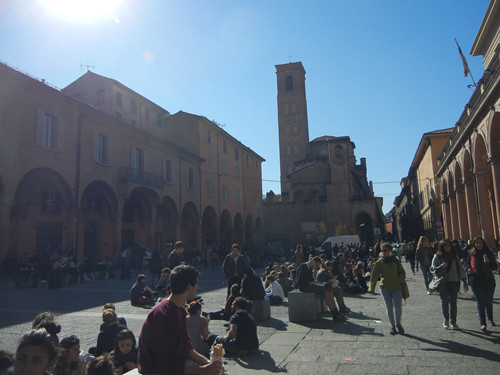
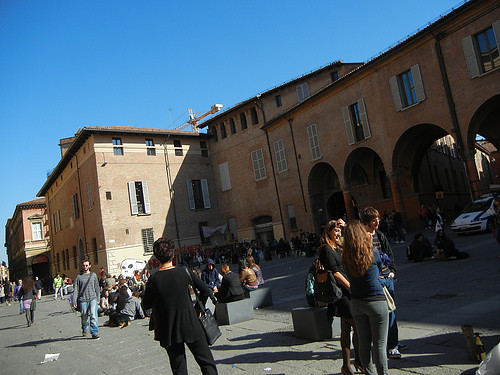
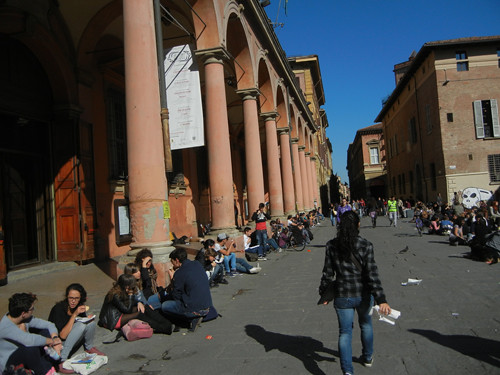
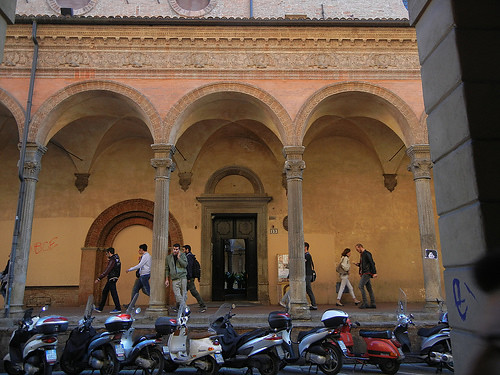

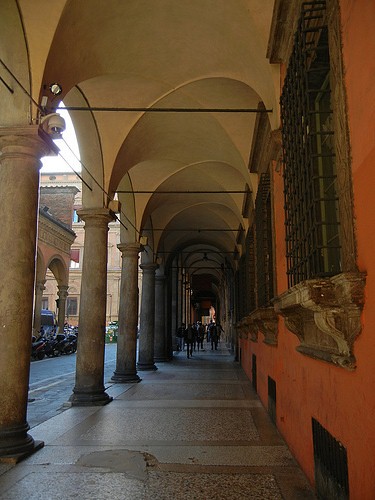
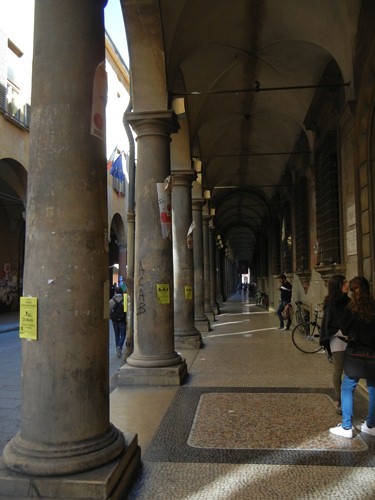
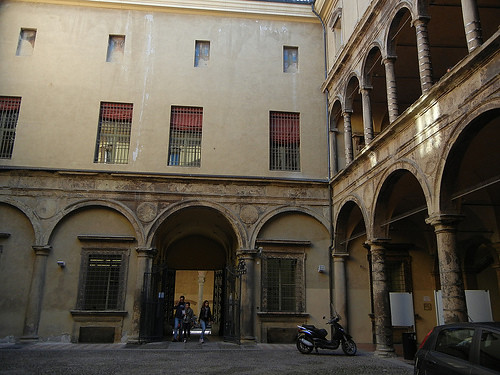
Law School
I wondered if umbrella would be really necessary in Bologna since one could almost always walk inside one portico after another, some beautifully decorated, some more austere and more functional oriented but no less remarkable, all around the city space we managed to cover within those three day:
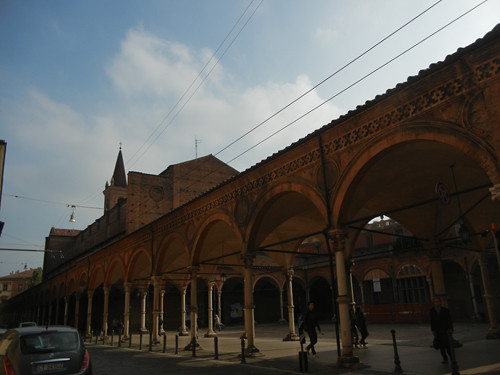

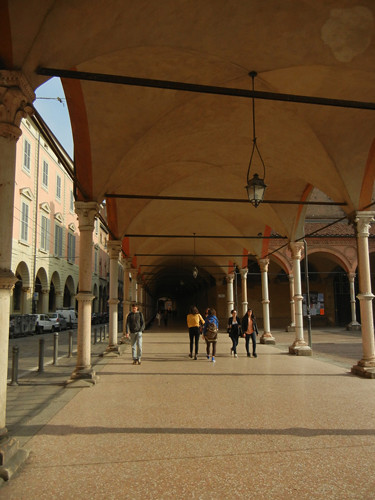
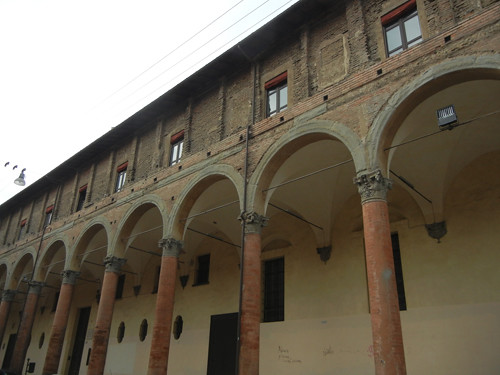
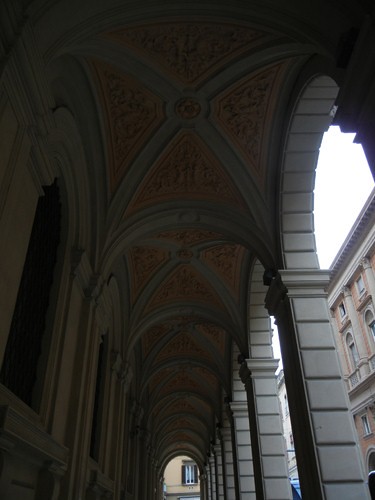
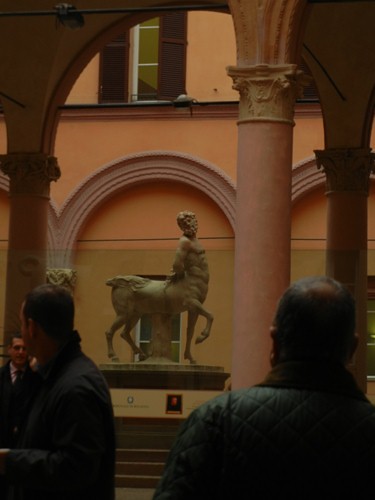
Back to the Two Towers area at night and those lit arcades were even more enchanting. Inside one of such arcades, there was an art deco style food court so we were able to have a glimpse of what was within:
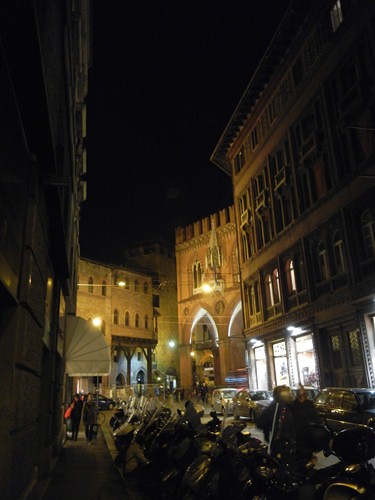
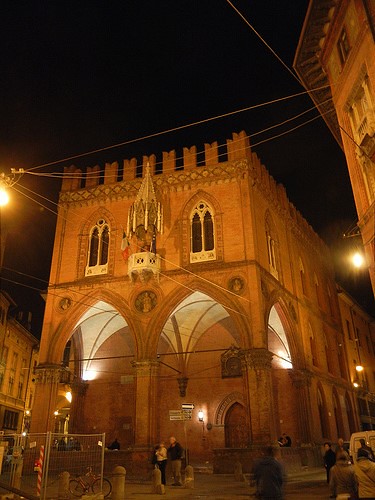
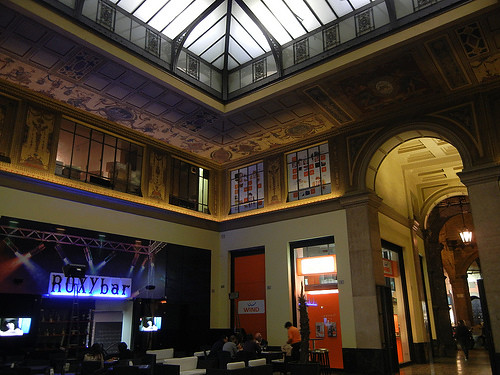
Food Court on Via Rizzoli, near Le due torri
Bologna used to be a walled city with many gates and now there were a handful of them remained, though standing alone, without the walls to make their functions apparent, and they became somewhat lonely monuments to the life and time of the begone eras:
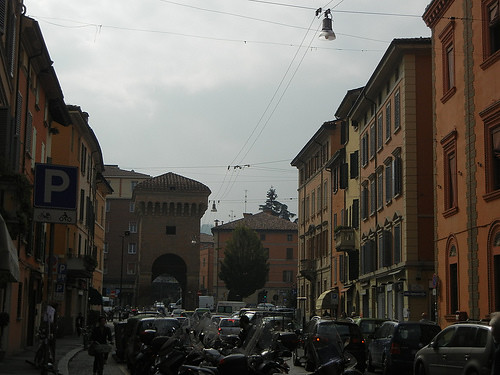
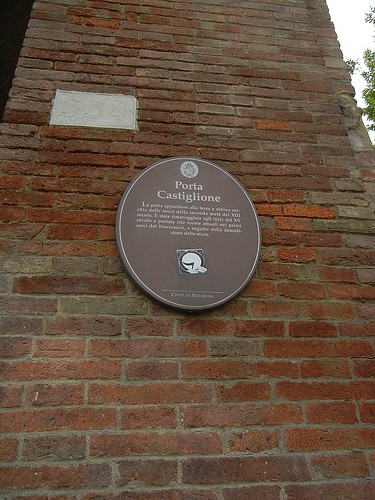
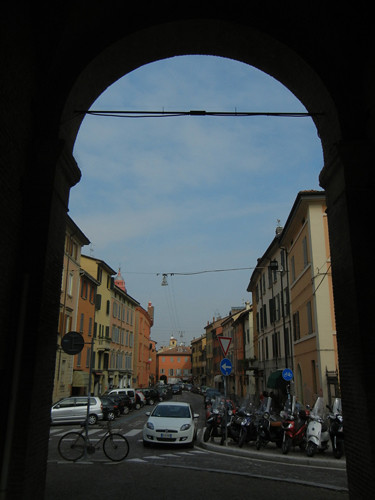
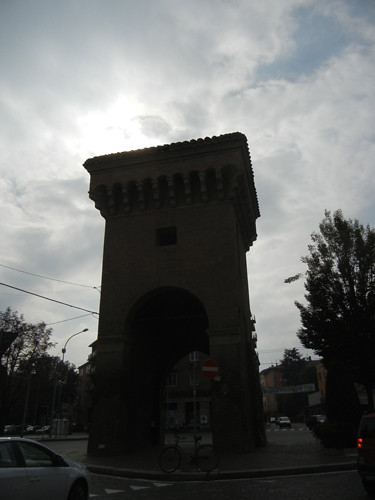
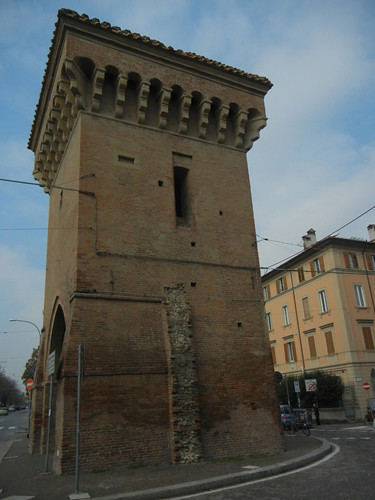
Porta Castiglione, Bologna, Italy
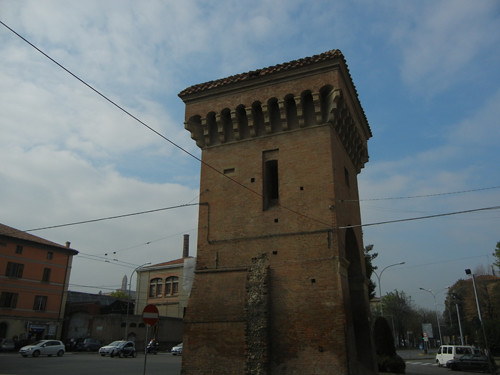

Ancient city gate, Bologna
Related posts on Art · 文化 · Kunst:
- Via Marchesana, Market near Albergo delle Drapperie, Bologna
- Pinacoteca Nazionale di Bologna
- Visiting Four Universities in Austria and Italy
- City of Padova (Padua), Italy
- Bridges in Venice, Italy
- Graz - the City Without Entrance, and Exit
- A Guest Blog - "Amateur food porn from Austria and Italy"
- Theater Experiences in Wien (Vienna)
- Gustav Klimt and Egon Schiele in Wien (Vienna)
Label: Italy, Austria and Italy Trip 2012





No comments:
Post a Comment